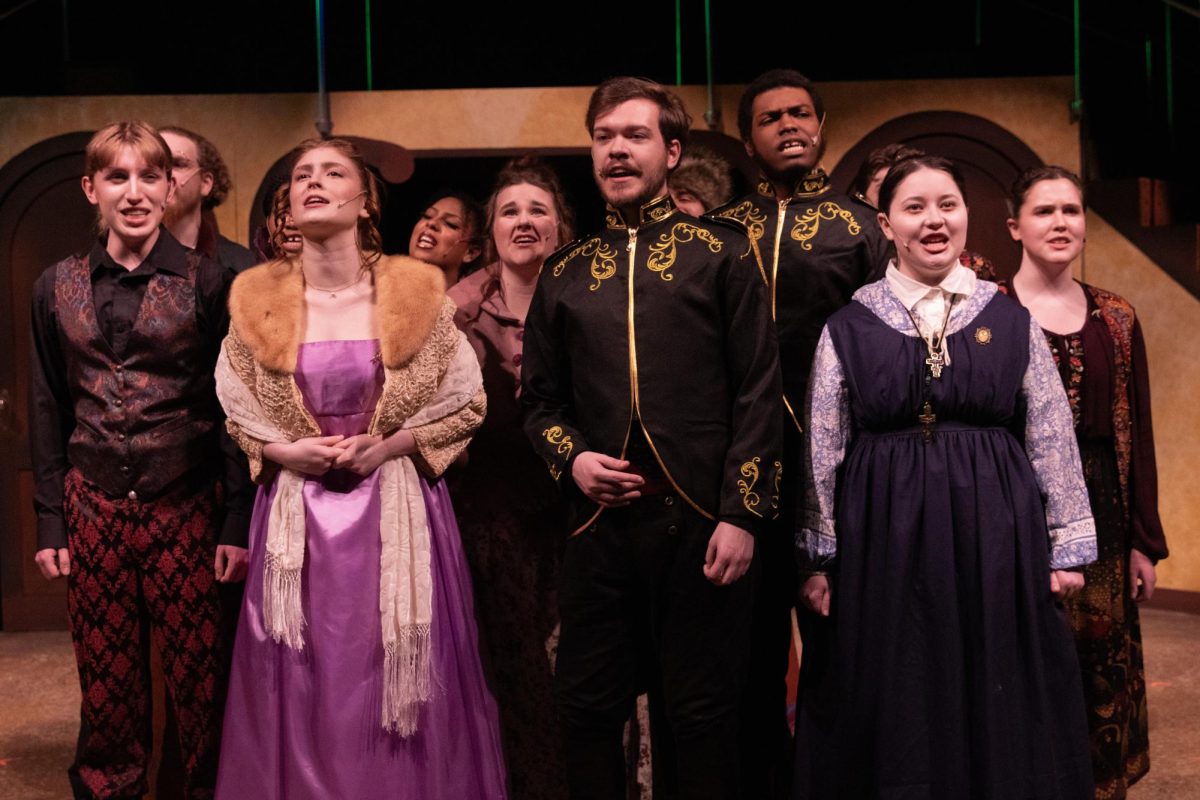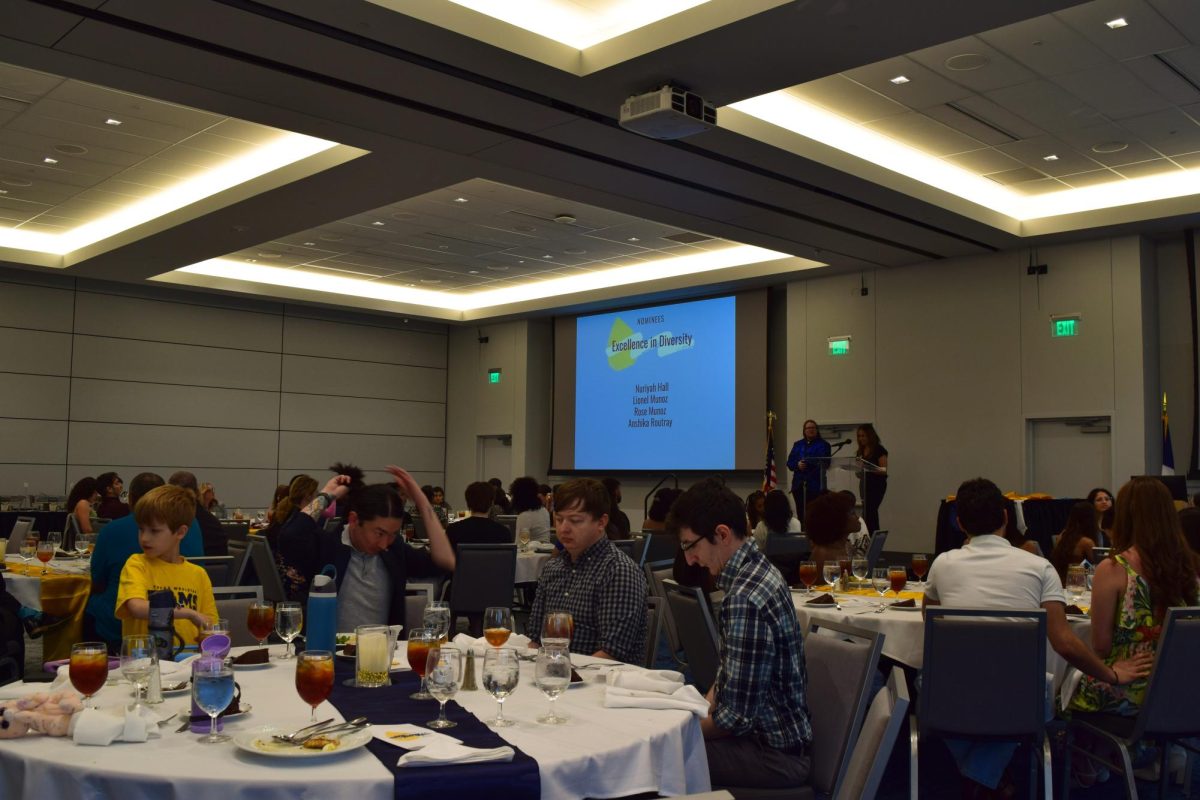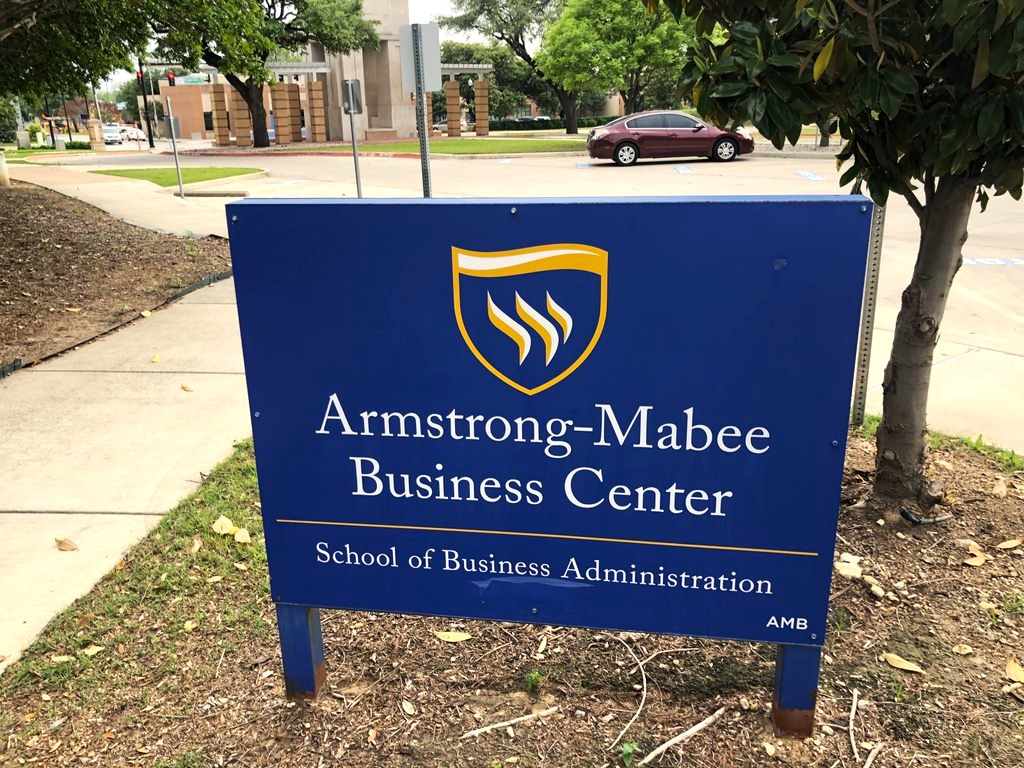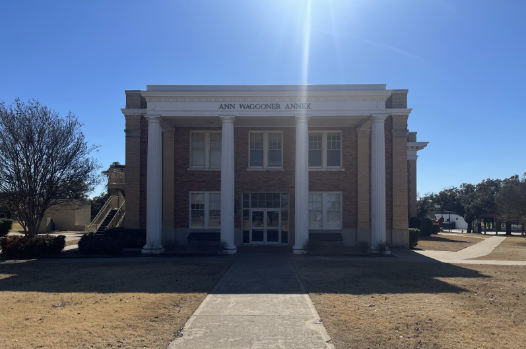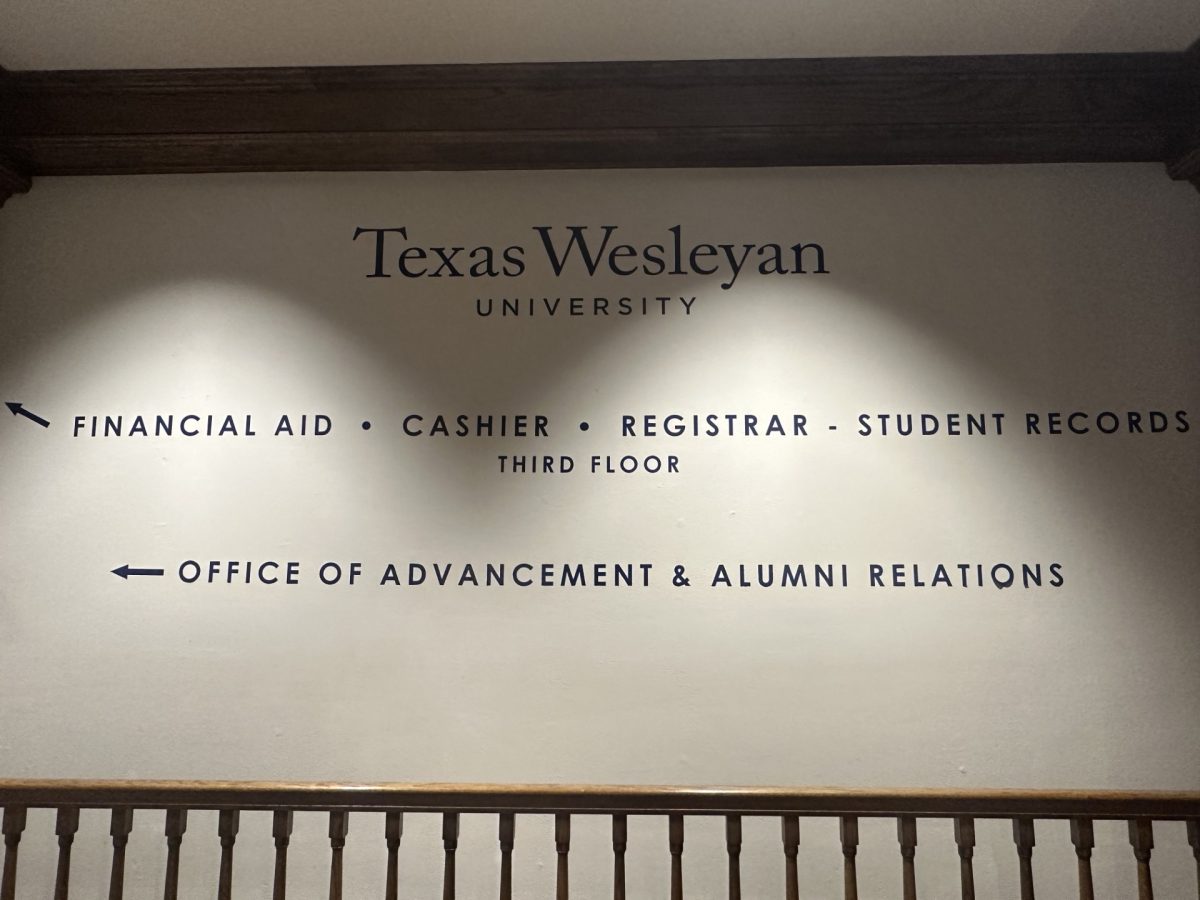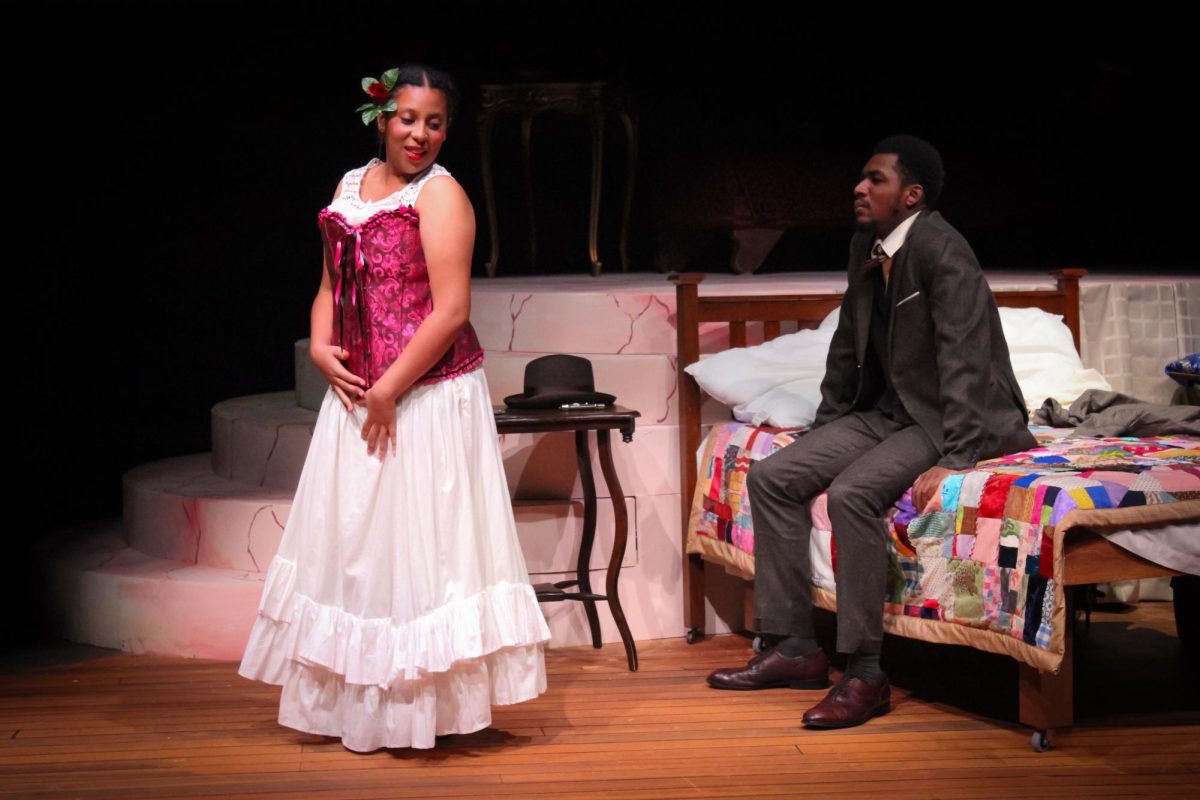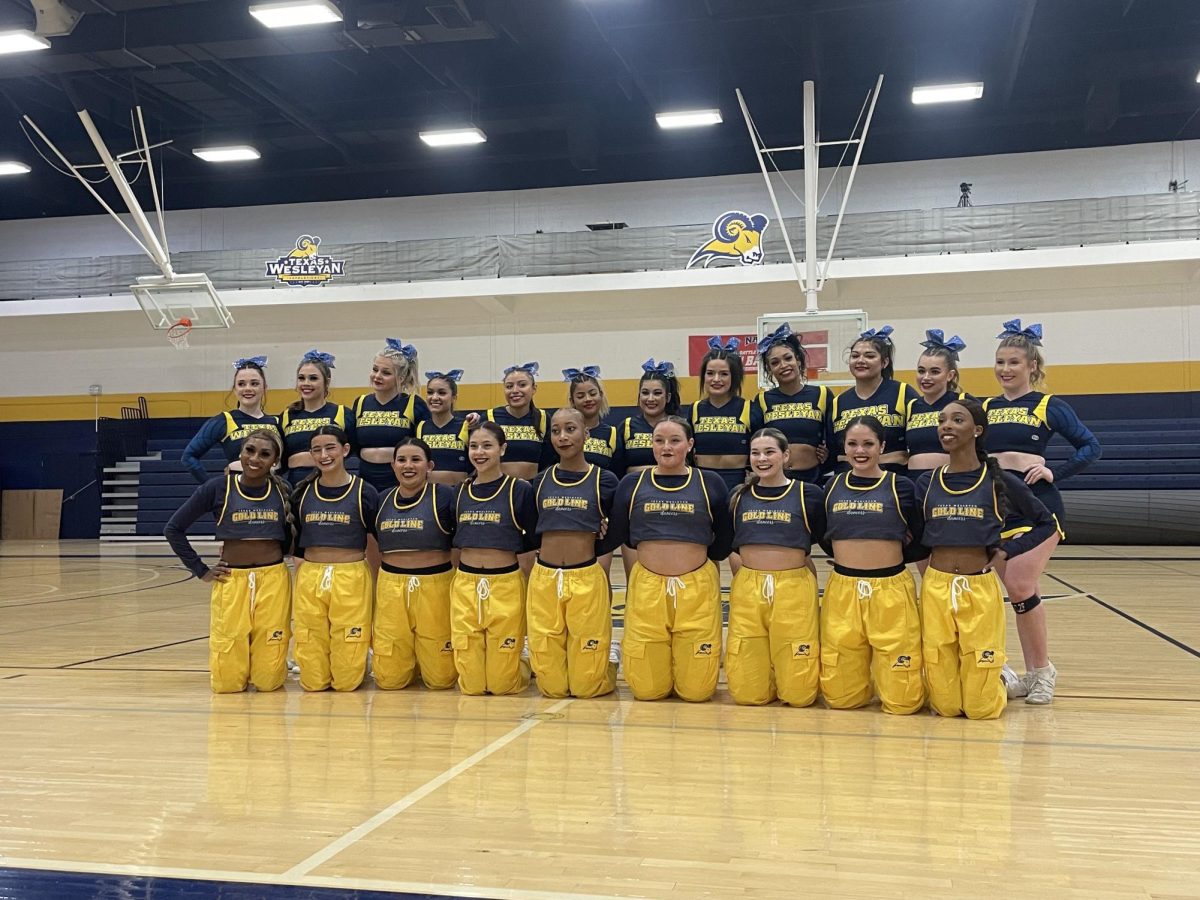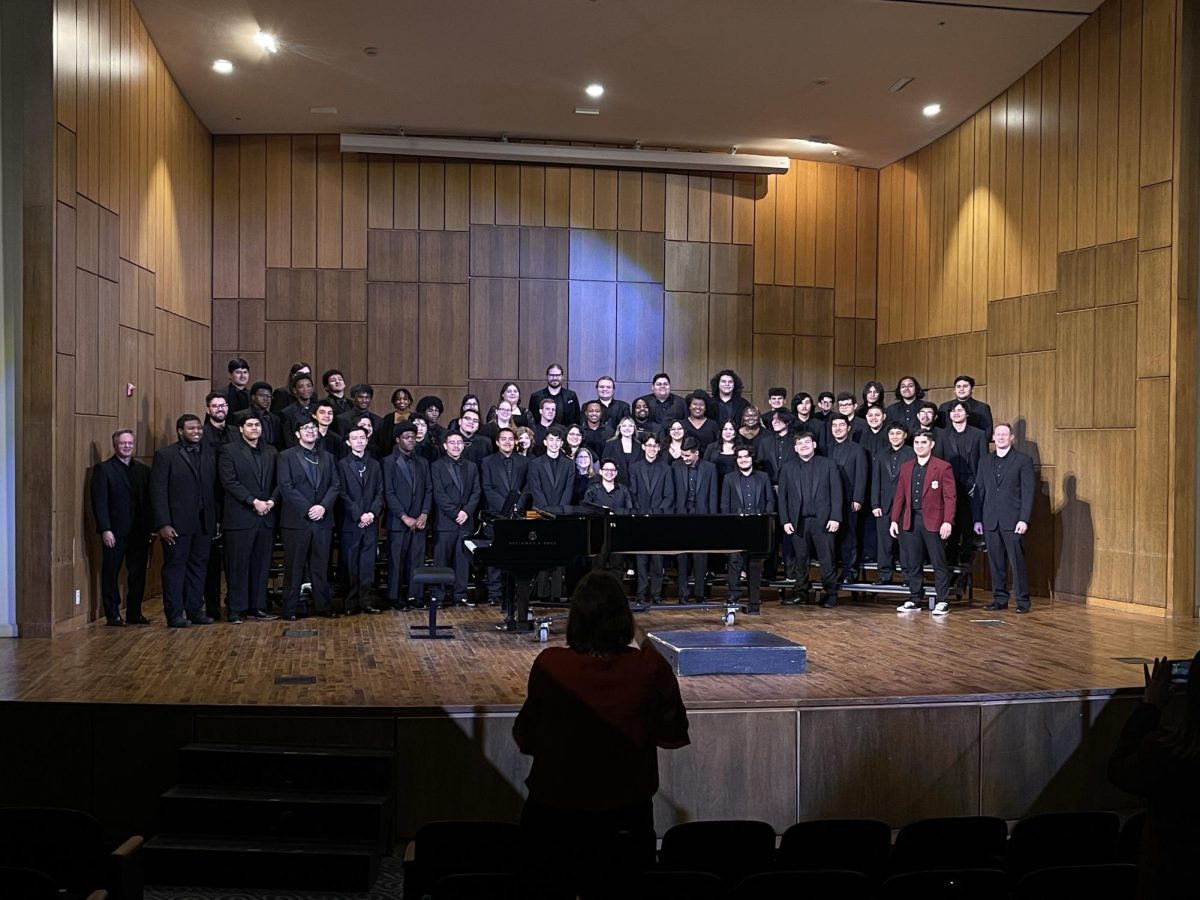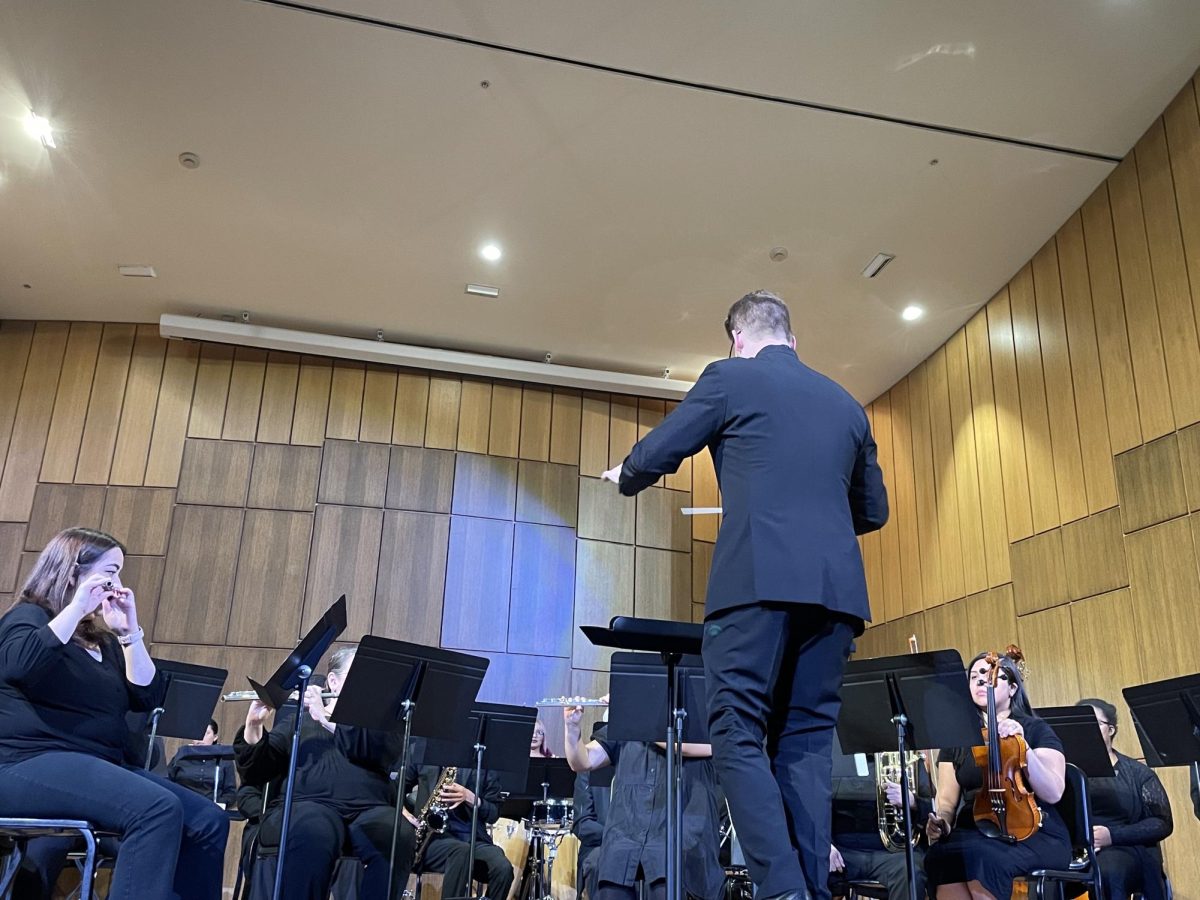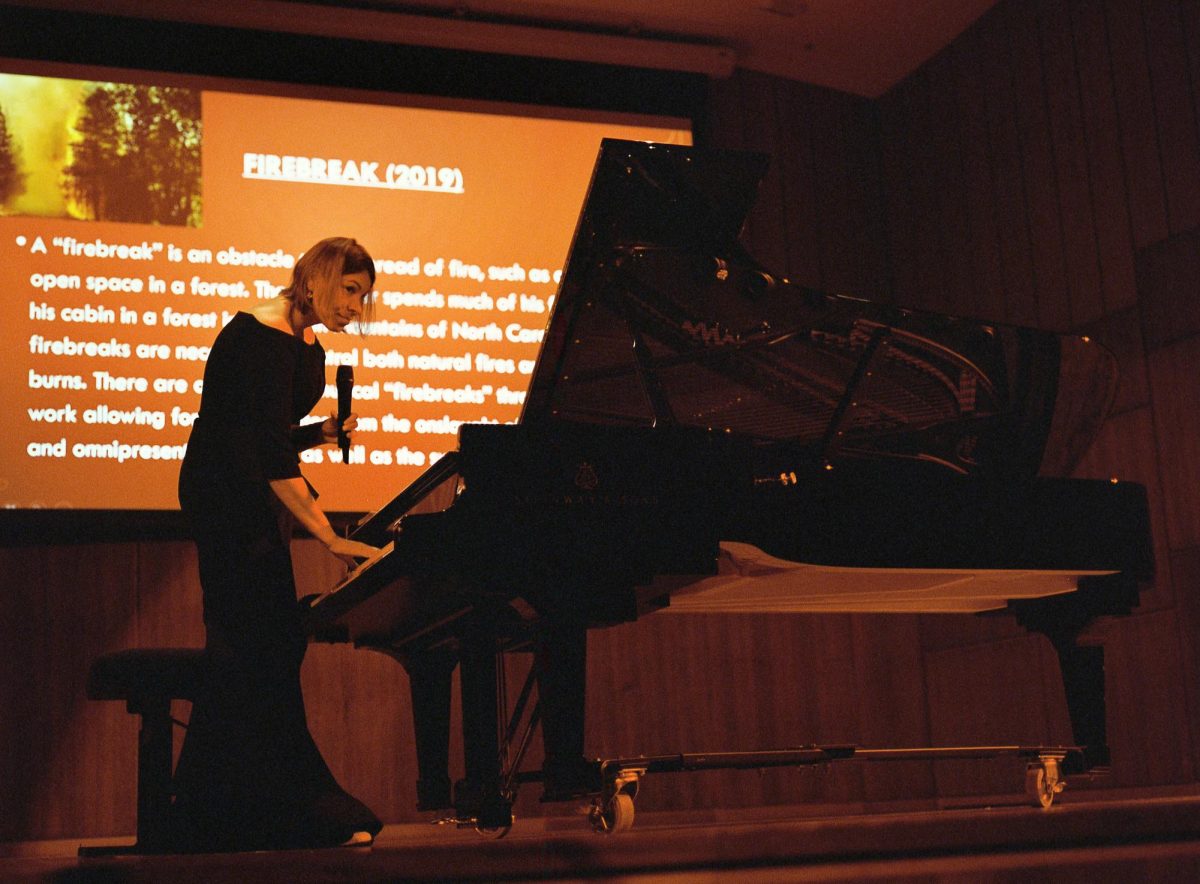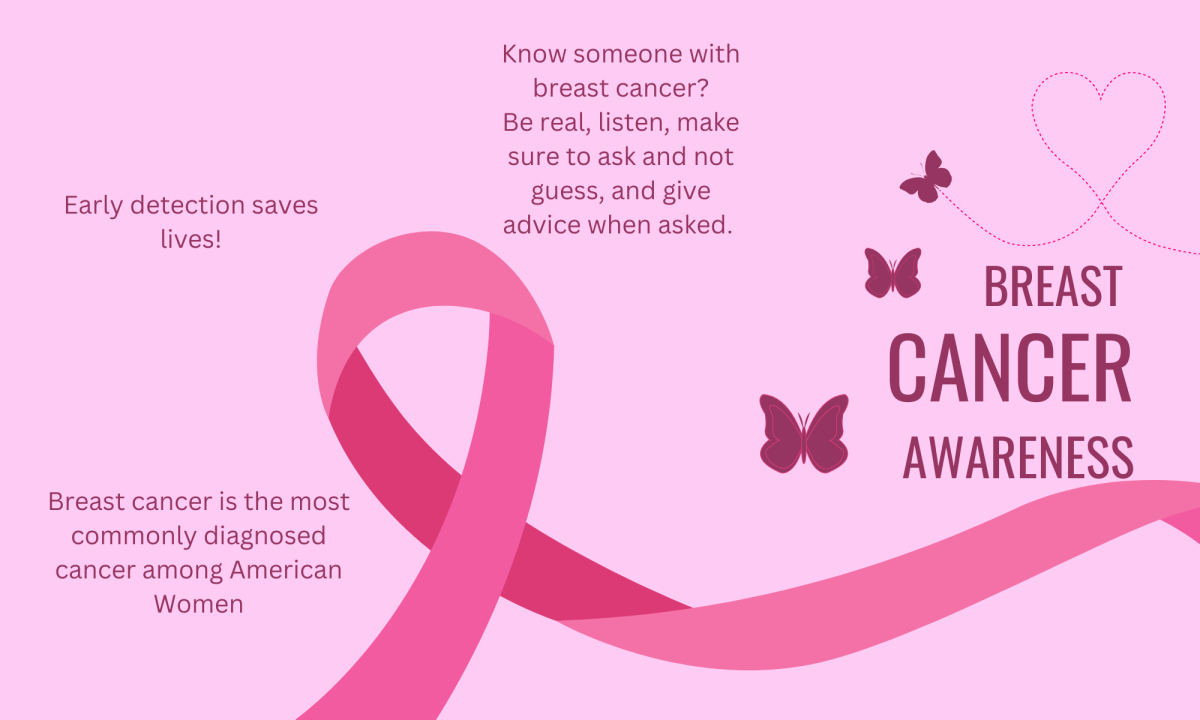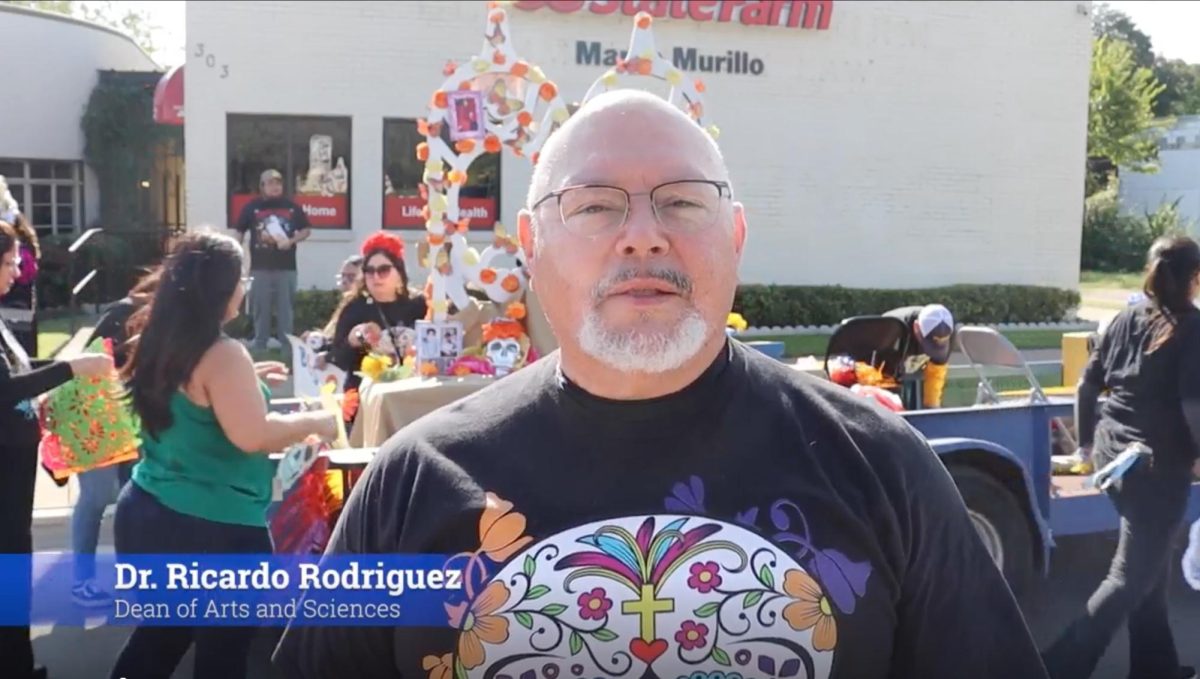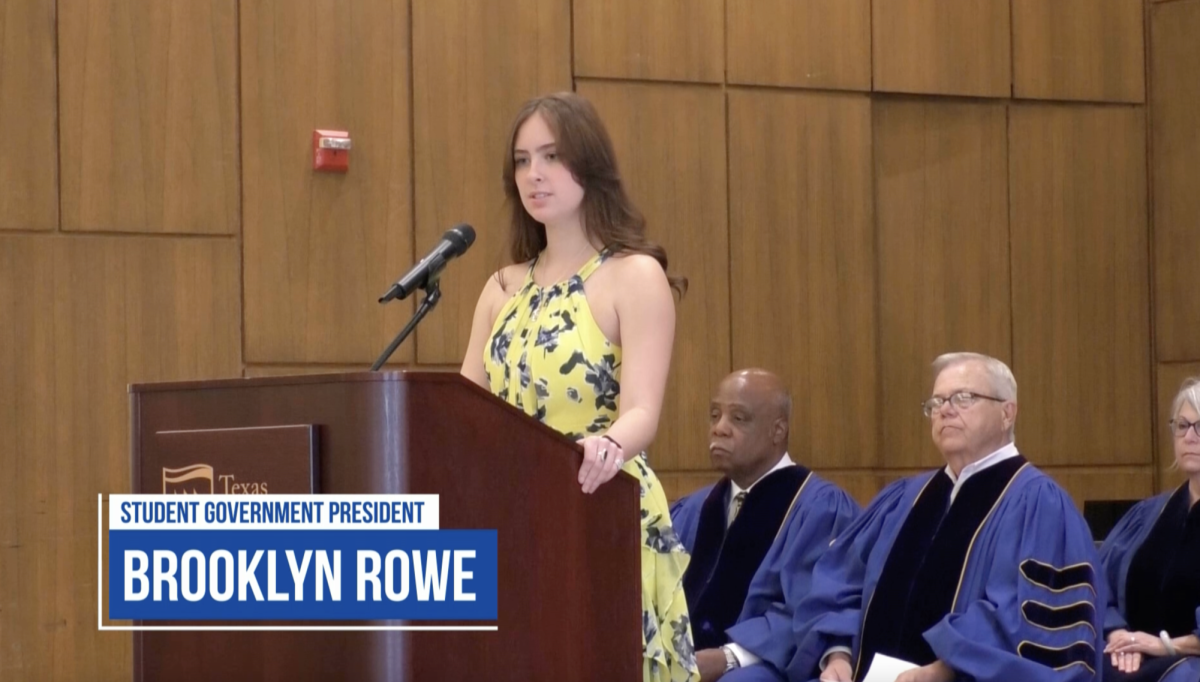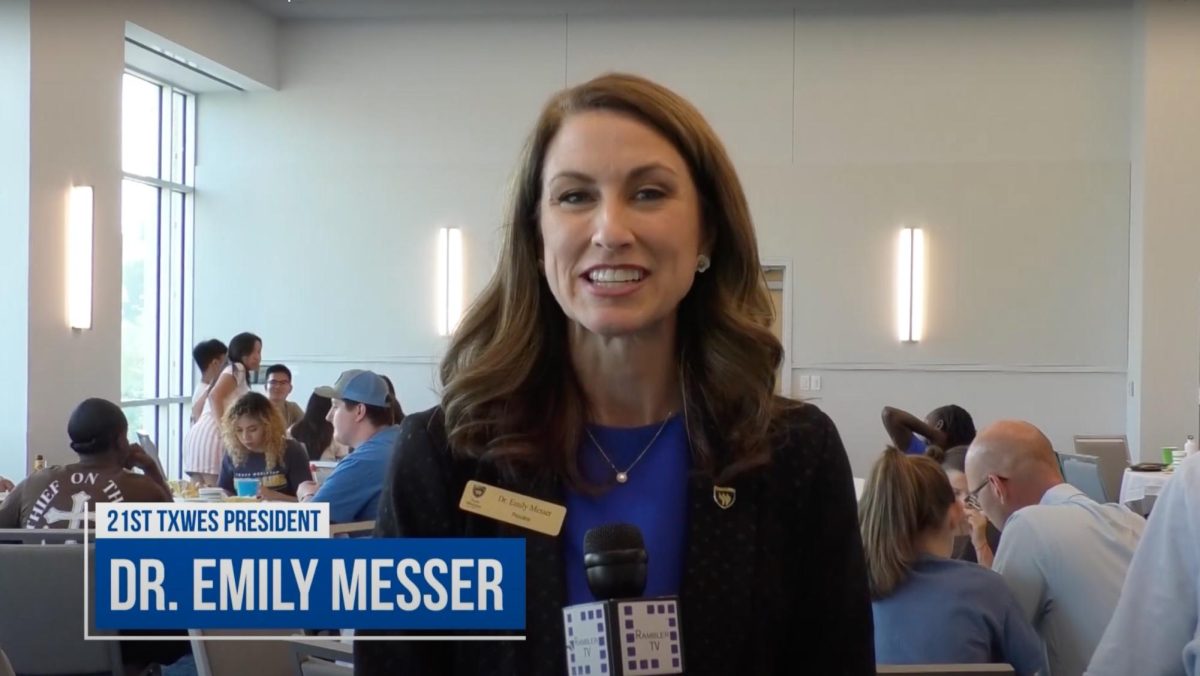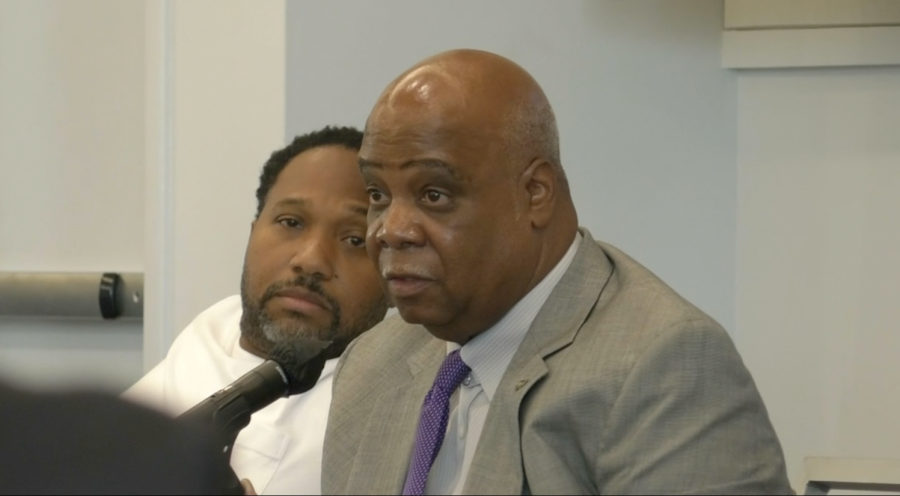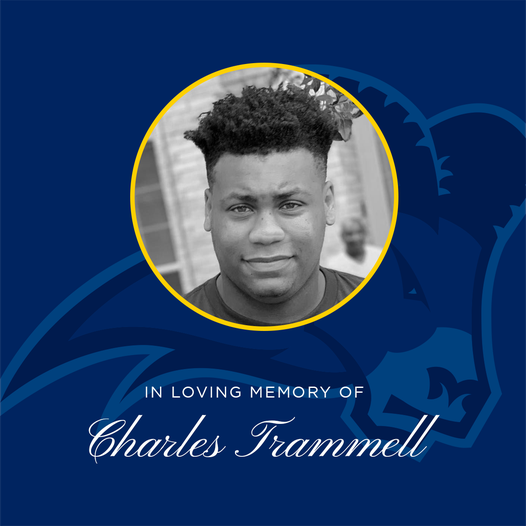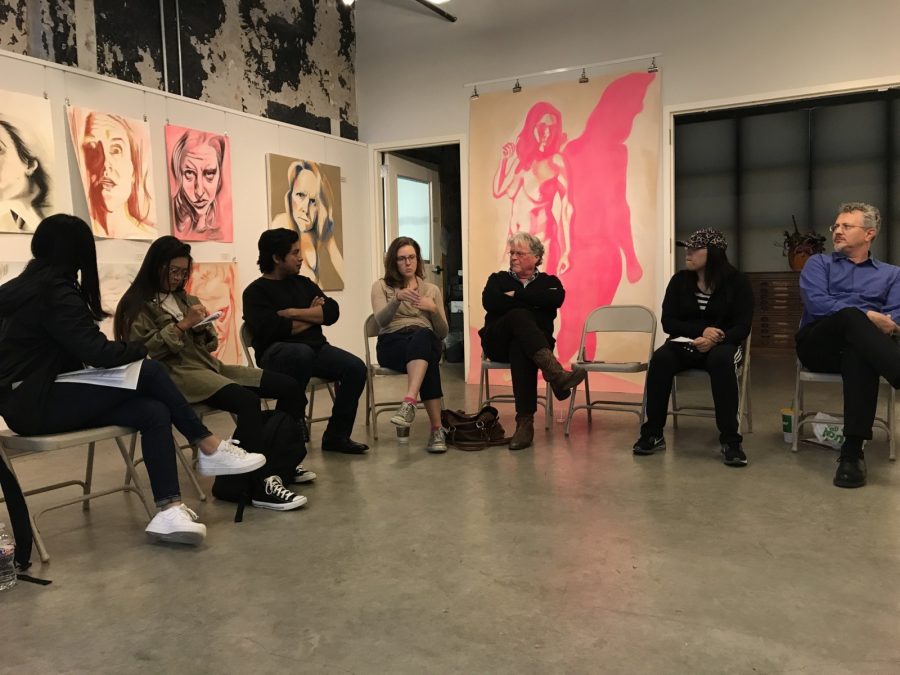Tuesday was a day of firsts for the Bernice Coulter Templeton Art Studio.
“You are the first attendees in the first gallery talk of the first art gallery at Texas Wesleyan University,” art professor Kit Hall said to a group of students, faculty and staff at the artist talk for ANIMUS, the new art exhibition on display in the studio.
The artist talk gave the artists with work on display, Genevieve Armstrong and Juan Cruz, a chance to explain their artwork and how they developed their pieces. The curator of the exhibition, Dr. Thomas Motley, served as a mentor to both artists, Hall said.
“Both have gone to school and he has been their teacher at one time,” Hall said. “Juan is finishing his degree up at North Texas and Genevieve is working as an artist who will soon be going back to school.”
Motley said there a lot of integrity in both artists’ work.
“Integrity of the identity of the individual and integrity of identity of the citizen,” he said. “What is means to be a citizen of a republic.”
Much of Cruz’s work has been dedicated to the missing students in Mexico from a 2014 incident in Iguala, in the state of Guerrero, Motley said, and Armstrong’s work is a more of a personal journey formed by gender issues.
Armstrong said that when studying art over the past thousands of years, most of the women portrayed in art looked the same or had the same role.
“I asked myself, ‘When will I see art that shows a woman that I would look to?’” she said.
Armstrong said she grew up around boys from having brothers. She has a tough time relating to many women today because she doesn’t fit in with many of the cultural norms, like wearing makeup or high heels.
“When I come to a culture that expects a lot out of me as a woman I fall short more often than I don’t in terms of what’s socially and culturally expected,” she said. “I find that very annoying and I want to find other women who also find that very annoying and also want to challenge the status quo.”
Cruz said his work is based around social issues more than cultural issues, and he hopes to make and difference and raise awareness of the corruption happening in Mexico.
“For me it is internal,” he said. “I am trying to convey a message to the people and make them more aware of what is going on around them.”
Cruz said people often ask him why he cares so much, since the event has happened and the people are dead.
“They might be dead but to me they are still alive, in my heart, in my mind and in my soul,” he said.
Portraying the victims in his artwork was difficult, Cruz said.
“But at the same time, it was something I had to do. Within that grotesqueness, that dark time, I was still able to find that beauty through the students or like through the issues occurring,” he said.
Motley said vulnerability is a key aspect in Cruz and Armstrong’s work.
“To make yourself vulnerable is a huge risk,” he said.
No one wants to be vulnerable, Motley said, but unless someone makes themselves vulnerable, there is a lot to miss out on in art.
“One of the things that Juan has spoken to is the vulnerability that a citizen places themselves in, in a trust that their public will take care of wherever the problem is, will take care of the responsibilities for that citizen,” he said. “In Gen’s case, you are talking about a personal and gender vulnerability that you hope, you pray, you live in a society that will have some sensitivity and some compassion for whatever gender that you are.”
Freshman education major Jacqueline Maya said when she looked at Cruz’s work, she saw that he was giving a voice to someone who did not have one, especially in the painting of a young girl with her mouth covered by a cloth.
“You could see how she didn’t have a voice and how he made it into something where she has a voice,” she said. “He gave her a voice and that is how is in honoring her.”
The exhibition will be on display in the studio until Dec. 5. The studio is located at 1415 East Vaughan Street, across from the clock tower on Rosedale Street, and is open Mon.-Thur. 10 a.m.-3 p.m.

